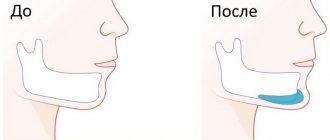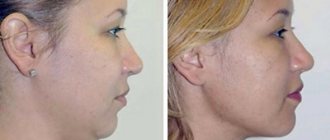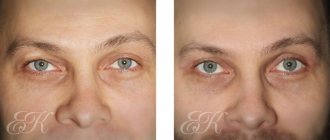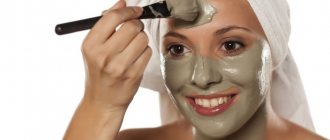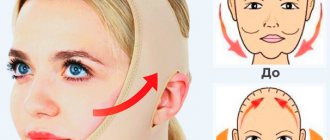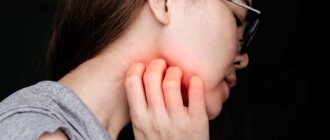- Ankle bandage
When using, you need to know how to properly bandage your leg with an elastic bandage:
- You need to tie an elastic bandage on your leg while lying down immediately after waking up;
- You need to bandage your leg from the ankle up, grabbing the heel;
- each subsequent turn of the bandage should overlap the previous one by 30–50%; for better fixation, the heel should be bandaged in a figure eight;
- The bandage should be applied evenly, gradually loosening it. The bandage should not be overtightened so as not to disrupt blood microcirculation;
- The bandage should be removed during sleep, unless there are additional instructions in this regard.
Briefly about the treatment method
Compression therapy in the treatment of lymphedema, using soft, low-stretch bandages and compression garments, is an integral part of disease management. The goal of compression therapy is to maintain and improve the reduction in edema achieved during treatment. Banding is the mainstay of treatment for stage 2 and 3 (moderate to severe) lymphedema and is an integral part of decongestant therapy. The advantages of the method are:
- Supports the results of lymphatic drainage massage, keeping 50% of daytime swelling.
- The bandage can be worn securely both day and night, due to the low resting pressure when the muscles are inactive and relaxed.
- The bandage is effective during training because it provides additional resistance.
- Dressing with special pads placed inside the dressing helps soften fibrous tissue.
When the active phase of therapy is over, you can move on to wearing elastic compression garments. However, it cannot be worn at night when the muscles are relaxed, so the band will need to be continued overnight. Compression sleeves and clothing are designed to help the lymph move in the right direction, maintaining the results of treatment. Compression hosiery frees the patient from constantly wearing bandages, which, thanks to the multi-layered and integrated components of the add-ons, become quite cumbersome. Single-layer support compression garments are a comfortable and effective addition to the daily life of a person with lymphedema. Another important benefit of compression garments is the medically integrated “compression gradient”. The gradient is of paramount importance for effective disease management because lymphatic fluid must be able to flow efficiently to the trunk, allowing for reduced drainage and limb reduction. To maintain normal blood and lymph circulation, the pressure should be moderately strong in the distal parts of the extremities (hand/foot) and less in the proximal areas (shoulder/thigh). While bandages create high operating pressures, compression garments create low operating pressures due to the elastic materials used in their construction. Clothing creates a very high resting pressure, while bandages create a low resting pressure, for these reasons it is not recommended for overnight use. Without the beneficial support provided by both forms of compression (clothing and bandages), treatment of lymphedema would be impossible, but together these forms of therapy achieve the desired effect (reduction of limb swelling).
Benefits of Elastic Compression
Bandage/clothing reduces the rate of ultrafiltration Lymph is a clear, protein-rich fluid in tissue spaces throughout the body. This fluid (1-2 liters per day) is usually carried by the lymphatic vessels, passes through the regional lymph nodes and joins the venous blood shortly before this blood enters the heart. Lymph circulation is important for maintaining normal tissue homeostasis throughout the body. The balance between fluid leaving the arterial side of the capillaries (ultrafiltration) on the one hand and the reabsorption that occurs in the venous capillaries as well as drainage through the lymphatic vessels on the other is known as Starling's equilibrium. Due to impaired lymphatic drainage in lymphedema, this balance is disrupted, protein-rich fluid accumulates in the tissues, colloid osmotic pressure increases, and all these events favor ultrafiltration. By raising tissue pressure using an external force (bandage or compression garment), the effective ultrafiltration pressure is reduced and less fluid accumulates, thereby improving the patient's condition. The bandage/garment improves the efficiency of muscle activity. Lymph moves through the various lymphatic vessels through muscle activity, contraction of the lymphatic vessels themselves, movements of the diaphragm (breathing) and negative pressure within the chest during the breathing cycle. In the limbs, skeletal muscle activity is an important factor in lymph transport. To maintain this process, normal tissue (skin and muscle) and joints are needed. The use of elastic compression increases the efficiency of muscle activity. The bandage/garment prevents the re-accumulation of lymphatic fluid. Manual lymphatic drainage is used to empty and decompress closed lymphatic vessels in the swollen part of the body. Since compression bandages compensate for the reduced tissue pressure of the skin, they prevent the re-accumulation of stagnant lymphatic fluid and thereby maintain the treatment result.
Why is the procedure necessary?
By regularly wrapping your face with an elastic bandage, the skin becomes smooth and tightened due to its rejuvenating and lymphatic drainage effect.
- Using an elastic bandage, constant compression is created on the face, so blood circulation improves and fat deposits are completely removed. Muscles also recover after a hard day of work and constant tension, the force of attraction decreases, and the face regains its tone.
- The muscles are constantly in opposition during compression, which trains them well. This load gradually restores tone and elasticity, the face tightens and becomes younger.
- This procedure brings the desired effect, because muscle fibers have their own memory, and therefore remember the correct position.
- The bandage can be worn all day, while doing business, and left overnight if the person does not experience any discomfort.
To enhance the compression effect, the bandage can be used with other home remedies, such as lifting masks and gymnastics.
Indications and contraindications for the treatment method
If you have mild lymphedema (stage 0 or 1), you can only use compression garments. For stage 2 and 3 lymphedema, it is recommended to first develop a treatment program called total decongestant therapy to reduce swelling. Undergo bandage treatment and then use compression stockings. Banding is contraindicated if:
- The patient has stage 0 and stage 1 lymphedema: it requires other forms of compression.
- The area to be bandaged is infected.
- There is an open wound.
- The patient has severe arterial obstruction.
Graduated compression should not be used in the presence of the following pathologies:
- Arterial Pathology: Compression of small arteries will further reduce blood flow, create pain and reduce blood supply.
- Diabetes with neuropathy.
- Wet dermatosis (reddened skin, abrasive surface, secretion of serous fluid).
- Skin ulcer (not caused by venous insufficiency).
- Eczema.
- Arterial circulation disorders.
- Painful Raynaud's pathology with damage to the arterial wall.
Congestive heart failure or the presence of blood clots are conditions where you need to discuss special precautions regarding ligation (or any other form of compression) with your doctor.
The best bandages for the face
There are many different types of bandages and elastic face masks on the market. The vast majority of them are produced in Korea and China. When purchasing an accessory, you should study the information or consult with a consultant in the store.
Rubelli beauty fac for skin tightening and facial contour correction
A universal Korean mask designed to tighten and improve skin elasticity, as well as correct the shape of the face. Release form: a set, which includes an elastic bandage made of thick neoprene and 7 fabric masks. The masks are impregnated with a special multi-component composition, which contains a large number of plant extracts.
Aurafix 1800 for smoothing wrinkles
Made in Turkey, the bandage mask is made of breathable, elastic material. It is intended primarily for tightening the chin and neck area, and can be used to correct the oval of the face. The bandage is available in three sizes. It is often used after surgical liposuction in the facial area and plastic surgery.
Gi slim to get rid of a double chin
This bandage from a Chinese manufacturer is used to eliminate a double chin. The mask effectively tightens the skin on the neck and helps break down fat deposits in the lower and middle third of the face. The chin band is made of wear-resistant material and retains its elasticity even after repeated use.
Universal belt Variteks 235
This compression face mask is made in Turkey. The bandage is effective for tightening the facial contour, reducing the severity of folds and creases, and strengthening the facial muscles. Doctors recommend wearing this belt after liposuction, circumferential lifting, or implant installation.
Variteks 235
Preparing for treatment
For bandaging
Low stretch bandages. Low-stretch wrap options range from the ultra-simple (short 100% cotton stretch wraps) to the more complex with a nylon/lycra blend in the outer layer and a foam inner layer that has multi-directional elasticity and adjustable compression that "doesn't migrate." Modern bandages have reusable Velcro and/or self-adhesive properties that help keep the bandages in place with little slippage. Most fabrics are cool, comfortable and breathable, hypoallergenic, hard-wearing and durable. Lotion to moisturize the skin and maintain its health. Well-moisturized skin prevents small cracks from forming and prevents bacteria from entering and causing infection. It can also prevent skin irritation from unaccustomed use of bandages. Tubular stocking. Additionally protects the skin and provides a comfortable, breathable base for wrapping. Felt cotton fabric, foam rubber, or foam sheets to add a layer of padding that evenly distributes the compression of the outer wraps.
Compression jersey
Compression clothing is selected by the attending physician. Important factors to consider are:
- compression class,
- appearance,
- material,
- finished product or to order,
- design,
- skin condition.
Elastic compression is recommended to maintain the results achieved by decongestant therapy. In the case of compression hosiery, compression is the force exerted by the product to compress the limbs and promote blood and lymph circulation. Compression is measured at specified points and expressed in millimeters of mercury. The highest value is at the ankle, called point B in medical parlance. The compression gradients indicated on the packages are measured at point B. Medical compression stockings are available in different compression grades:
- Class I: 20-30 mmHg.
- Class II: 30-40 mmHg.
- Class III: 40-50 mmHg.
- Class IV: 50-60 mmHg.
The gradient gradually decreases from point B to the edge of the garment. Sleeves are generally class I or II, gloves and mittens class I, stockings class II or III. Fibers used in elastic compression garments are typically latex or synthetic rubber, nylon, polyester, cotton, or a blend of these. Fabrics can be thick or thin, depending on the fibers used and the compression class (the higher the class, the thicker the garment). Most garments containing latex are knitted from a thread consisting of a latex core wrapped in nylon or cotton, this is important for those with latex allergies. There are three types of knitwear: round knitted, flat knitted and embroidered. Round knit fabrics are seamless but tend to bunch at the top. This creates a tourniquet effect, impeding the flow of fluid from the limb. Flat knits are often made from a rough, textured fabric that can provide a mini-massage to the skin, helping to improve fluid absorption and transport. Sewn, consist of several layers. In order for the clothes to stick better to the body, use a silicone tape inside the upper edge or several longitudinal (not circular) strips of transparent glue.
Types of elastic bandages
Products differ in two main parameters: purpose and degree of elongation.
By purpose there are:
- compression - widely used in phlebology for the treatment and prevention of vein diseases;
- fixing bandages that prevent or compensate for the consequences of sprains and dislocations;
- fixing postoperative dressings.
According to the degree of extensibility, bandages are:
- short stretchable with an elasticity coefficient of no more than 70%;
- medium-tensile - the elongation coefficient is 70–140%;
- Highly stretchable, so-called motion bands, provide the most gentle compression. The stretch ratio is more than 140%.
Based on their shape, bandages are divided into tubular and tape.
Bandage sizes
Elastic tape bandages have a width from 6 to 20 cm and a length from 4 to 7 m.
Recommendations for choosing a suitable bandage should be obtained from your doctor and strictly followed.
How the treatment method works
Banding technique
Compression layers help protect skin from irritation, distribute compression evenly over wide areas, and provide high operating pressure and low resting pressure to stimulate lymph flow. During active treatment, the bandages are worn 23 hours a day, 7 days a week throughout the treatment phase. The band should not be placed without proper supervision, as proper banding is a complex process. The limb should not be wrapped too tightly to “squeeze out” excess fluid. This may seem like a good idea to some, but it is absolutely forbidden to do this! A bandage that is too tight causes a tourniquet effect, which blocks the flow of lymph and further damages the affected tissues and lymphatic vessels. There are several different dressing methods. It is better to follow the method recommended by your therapist. Bandages are created from several layers of materials. The first layer is absorption. Consisting of a tubular bandage, it absorbs excess sweat and protects the skin from friction against other layers that will be placed above it. A new or washed bandage is used each time you make a new bandage. The limbs are bandaged from the base of the fingers upward to the desired height. The second layer is shock-absorbing. It consists of various materials (foam rubber, foam rubber, etc.) and is used to uniformly distribute pressure on tissues and soften fibrous tissues, as well as to shape the limb. The third layer is compression. Consists of stretch bandages. They come in different widths and lengths, depending on the area being wrapped. The technique of applying bandages is such as to provide the greatest compression at the far end of the limb and the least near the body.
Features of using compression knitwear
Sleeves and stockings are worn during the day, removed at night. Although compression stockings are made of durable elastic materials, they stretch after about twelve hours of wear. This is especially true in high-stretch areas (knee, elbow) where clothing wears more. Therefore, it is good to have several sets of elastic underwear. Compression jersey should be worn during sports or during increased physical activity. The pressure of the swelling pulls the skin so that it no longer provides a firm surface for the muscles. Exercise causes an increase in blood flow, which leads to an increase in lymphatic load. Compression clothing provides “hard new skin” for muscles and helps normal lymph flow.
Types of facial bandages, their advantages and disadvantages
There are several types of bandages, differing in design. Each of them works in a specific area of the face, solving a particular problem.
Elastic mask
The elastic mask differs from other models in that it covers most of the face. It has slits for the nose, eyes and ears. It serves to strengthen the facial and neck muscles, improve skin elasticity and tighten the face. The quality of the face mask material is similar to an elastic bandage.
Facial bandage
The facial bandage is primarily intended for face lifting. It can also be used to prevent the appearance of aesthetic defects. In addition, such a product helps improve blood circulation and relieve tension in the facial muscles.
Facial
Pull up belt
A lifting corset is needed to reduce a double chin, tighten sagging cheeks, and correct the contour of the face. An elastic chin mask prevents fluid stagnation and the formation of edema, promotes the breakdown of fatty tissue, and improves muscle tone. The scheme for wearing it is similar to applying a sling-shaped bandage to the chin.
Prognosis after treatment method
Although lymphedema can be reduced to normal or near-normal size with proper treatment, the lymphatic vessels never become normal again. In addition, after swelling decreases, skin elasticity is not completely restored. Therefore, external support is an important component in the treatment of the disease. Even after successful treatment, the part of the body affected by lymphedema is at constant risk of fluid accumulation again, and most people with lymphedema know that this condition requires lifelong care. Without the benefits of external compression, successful long-term disease management would be very difficult and in most cases impossible.
Pros and cons of using
Like any therapeutic agent, elastic bandages have advantages and disadvantages.
Advantages:
- Ease of use;
- reusable;
- versatility - can be applied to any part of the body;
- reliable fixation.
Flaws:
- a feeling of itching and peeling of the skin under the bandage;
- the need for qualified assistance in applying a bandage to elderly patients or patients with limited mobility;
- feeling of discomfort in the warm season;
- difficulties in choosing clothes and shoes.
Observation program after treatment method
Compression jersey
It is better to wash knitwear by hand (especially clothes with silicone tape), although there are products that can be washed in a machine. When washing clothes in the machine, it is recommended to place them in a wash bag to protect the fabric. Daily washing is recommended, especially if lotions or creams are used (moisturizing lotion can damage the fibers in compression garments and should only be used at night when clothing is removed). It is better to have more than one item of clothing, they should be worn alternately so that elasticity can be restored and their effectiveness can be increased. Harsh cleaning agents, solvents, and cleaners must not be used. Use mild soaps or detergents that do not contain chlorine, fabric softeners, or other laundry additives. Clothes should not be wrung out by twisting the fabric. Place it in a towel and gently wring it out. Avoid exposure to direct sunlight when drying. It's a good idea to hang your towel on a drying rack and hang your clothes on top, as the weight of the water can stretch the fabric. Compression hosiery should be replaced approximately every six months or when the garment shows signs of wear that could adversely affect its compressive properties. Generally, if a knit no longer returns to its original shape after washing or has holes in the material, it will need to be replaced.
How and when to wear it, how to secure it correctly?
There are general rules regarding the use of any face bandages:
- You can only put on a mask on a face that is well cleansed of makeup and dirt;
- Having washed and blotted your face , apply a fabric mask soaked in a special composition to the skin or apply a cosmetic product (cream, gel, mask);
- an elastic mask or a mask against the double chin is usually put on from bottom to top (the diagram is usually in the instructions);
- When securing the mask, you need to make sure that it does not tighten the skin too much and that wearing it will be comfortable.
Washing the skin before using the bandage
The bandage is worn for 30 to 60 minutes. There is an opinion that a sling-shaped bandage on the lower jaw can be left overnight, but many experts believe that this should not be done, since wearing it for too long can negatively affect the condition of the skin. An exception is the situation when a bandage has to be worn after plastic surgery.
After removing the mask, you must wash it thoroughly and remove any remaining product from your face.
How to choose a bandage?
When choosing a bandage, you must first of all focus on the problem that needs to be solved with its help. A facial bandage is suitable for getting rid of wrinkles, and a strengthening elastic bandage is suitable for eliminating a double chin. You definitely need to check the quality of the bandage. It should be quite elastic, without hard internal seams and unpleasant odor.
The best option, according to experts, is to purchase a set that includes several masks - elastic and fabric, impregnated with ingredients beneficial to the skin.
Of course, the best choice is a high-quality product from a specialized store, but if necessary, you can use a regular elastic bandage for a facelift.
How to make a bandage mask yourself?
If it is currently not possible to purchase a professional bandage or you just want to test your skill, you can try making a mask yourself.
To make a mask to prevent the appearance of a double chin, you will need an elastic bandage, which can be purchased at any pharmacy. It is necessary to cut off enough of the bandage so that it covers the chin and head. Having tried on the blank, holes are cut in it for the ears, and Velcro is sewn on the ends of the bandage, through which the mask will be attached.
Those craftsmen who consider this design too weak, so they go the other way - they tightly wrap their head with several layers of bandage from bottom to top, fixing the chin. The ends of the bandage are secured at the top of the head.
How to care for a facial bandage?
Proper care of your compression mask will not only extend its service life, but will also significantly reduce the risk of skin irritation. Since the bandage mask comes into contact with the skin of the face, it needs to be cleaned regularly. In order to preserve all the properties of the bandage, several rules must be followed:
- The bandage should be washed in warm , but not hot water (optimal temperature + 38 ... 40⁰С);
- It is best to use baby soap as a cleaning agent
- The use of aggressive detergents (for example, bleach, washing powder, etc.) is strictly prohibited
- dry the mask by placing it on a towel; do not try to speed up the process by placing the bandage on a radiator, in direct sunlight or using a hot hair dryer.
You can use the mask only after it has completely dried.



